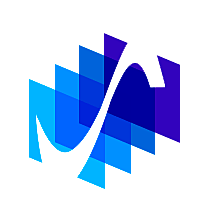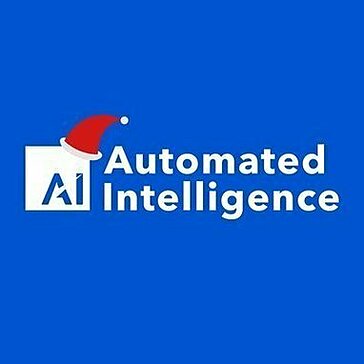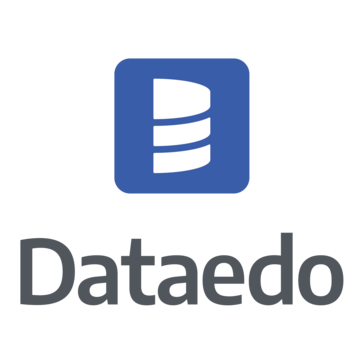4.25
EGERIE Review
Discover our EGERIE review. Explore features, security, pricing, updates, and support. Assess its value for money and see if it fits your needs!

Comprehensive overview and target audience
EGERIE provides a sophisticated platform dedicated to integrated cybersecurity risk management. It empowers organizations to meticulously model their unique cyber ecosystem, assess potential risks using both quantitative and qualitative methods, and strategically define security measures directly linked to business impact. This methodology transcends basic compliance adherence, offering instead a dynamic and continuous perspective on cyber exposure and resilience posture.
The primary target audience for EGERIE encompasses medium to large enterprises, particularly those operating within critical sectors such as finance, essential infrastructure, healthcare, and governmental bodies. Within these organizations, key stakeholders include Chief Information Security Officers CISOs, dedicated Risk Managers, IT Security Analysts, Data Protection Officers DPOs, and Compliance Officers. Any organization seeking a structured, business oriented framework for navigating complex cyber threats will find EGERIE exceptionally valuable. Its inherent scalability also accommodates entities at various stages of cybersecurity maturity.
The platform is distinguished by its comprehensive EGERIE security features, engineered for thorough risk analysis, simulation, and effective treatment planning. Users benefit from regular EGERIE updates and new features, ensuring the software stays current with the evolving threat landscape, technological advancements, and shifting regulatory requirements. This dedication to continuous improvement signifies a proactive approach to cybersecurity management.
Evaluating the EGERIE value for money involves balancing the platform investment against the potentially catastrophic costs associated with unmitigated cyber incidents. A direct EGERIE pricing comparison with alternative solutions often highlights different licensing models and feature sets; EGERIE typically positions itself based on its depth of analysis and integrated approach. Pricing generally varies based on deployment complexity, user count, and selected modules, necessitating direct consultation for precise figures.
To ensure successful implementation and ongoing utilization, extensive EGERIE support and training resources are provided. These include detailed documentation, accessible online learning materials, dedicated customer support avenues, and options for tailored training programs. Leveraging these resources effectively is crucial for organizations aiming to maximize their return on investment and fully harness the capabilities of the EGERIE platform for robust risk management.
User experience and functional capabilities
Delving into EGERIE user experience insights reveals a platform designed with specialized users in mind. While the interface is comprehensive, reflecting the depth of its capabilities, new users may initially face a learning curve. Understanding how to use EGERIE effectively involves grasping its structured methodology for modeling assets, vulnerabilities, threats, and controls. The graphical representations aid visualization, but navigating the various modules for risk analysis, treatment planning, and compliance mapping requires familiarization. Initial setup and configuration are pivotal; following the EGERIE implementation guide closely is recommended to tailor the platform to specific organizational contexts, which significantly enhances usability later on.
Functionally, EGERIE excels in its granular approach to risk assessment. Users can define complex relationships within their cyber ecosystem, allowing for detailed impact analysis. The platform supports both qualitative and quantitative risk scoring, offering flexibility based on data availability and organizational preference. A key strength lies in its scenario simulation capabilities, enabling users to forecast the potential impact of different threats or the effectiveness of proposed security controls. Integrating EGERIE with other tools, such as vulnerability scanners, SIEM systems, or CMDBs, is possible through APIs, automating data input and enriching the risk picture. However, achieving seamless integration often requires technical expertise and careful planning.
Addressing common problems with EGERIE often involves managing the complexity of the initial data population and model building. Ensuring data accuracy and completeness is paramount for meaningful results. Some users report challenges in keeping the models perfectly aligned with rapidly changing IT environments without dedicated effort. Regular EGERIE updates and new features aim to alleviate some of these pressures by refining workflows, enhancing automation, and expanding integration options. Staying informed about these updates is crucial for leveraging the platform’s full potential and maintaining an effective risk management posture. User feedback often drives these improvements, focusing on usability enhancements and expanded analytical capabilities.
Adopting best practices for EGERIE usage maximizes its value. This includes establishing clear governance around the risk management process facilitated by the tool. Regular training and internal knowledge sharing sessions help ensure consistent and effective utilization across different teams. It is also vital to periodically review and refine the risk models, threat libraries, and control frameworks within EGERIE to reflect the current organizational reality and evolving threat landscape. Defining clear objectives for using the platform, whether for compliance reporting, investment prioritization, or strategic risk reduction, helps focus efforts and measure success effectively. Consistent application of these practices transforms EGERIE from a complex tool into a powerful strategic asset for cybersecurity resilience.
Who should be using EGERIE
EGERIE is primarily designed for organizations grappling with complex cybersecurity risk management challenges. Its ideal users are typically medium to large enterprises, especially those operating within highly regulated or critical infrastructure sectors. This includes industries like finance, banking, insurance, healthcare, energy, telecommunications, and government bodies. These organizations often face stringent compliance requirements and possess intricate IT ecosystems where quantifying cyber risk is essential for strategic decision making.
Within these organizations, several key roles stand to benefit significantly from utilizing EGERIE:
- Chief Information Security Officers CISOs: For gaining a holistic view of cyber exposure, justifying security investments, and communicating risk posture to executive leadership.
- Risk Managers: To implement a structured, repeatable risk assessment methodology, track mitigation efforts, and ensure alignment with overall enterprise risk management frameworks.
- IT Security Analysts: For detailed modeling of assets, threats, and vulnerabilities, conducting technical risk assessments, and evaluating the effectiveness of security controls.
- Data Protection Officers DPOs: To manage risks related to data privacy regulations, ensuring compliance through systematic assessment and documentation.
- Compliance Officers: For mapping controls to various regulatory standards, streamlining audit processes, and demonstrating due diligence.
A typical EGERIE use case scenario involves an organization needing to move beyond simple compliance checklists towards a proactive, quantifiable risk management approach. This could be driven by regulatory pressure, the need to prioritize limited security resources effectively, or a desire to integrate cybersecurity risk into broader business strategy discussions. Organizations seeking to simulate potential attack impacts or evaluate the return on investment for different security solutions will find EGERIE particularly powerful.
However, maximizing the platform’s value requires commitment. Successful implementation and ongoing benefit depend heavily on adopting Best practices for EGERIE. This includes dedicated resources for model building and maintenance, clear governance processes, and continuous user training. Organizations prepared to invest in this structured approach are best positioned to leverage EGERIE as a central pillar of their cybersecurity strategy.
Unique Features offered by EGERIE
EGERIE distinguishes itself through significant customization capabilities and unique features designed to provide a tailored risk management experience. The platform is not a one size fits all solution; instead, it offers considerable flexibility to adapt its sophisticated framework to specific organizational structures, industries, and risk appetites. This adaptability is key when Customizing EGERIE for business growth, as it allows organizations to align cybersecurity risk management directly with strategic objectives and operational contexts. Users can define custom asset types, risk scenarios, scoring methodologies, and reporting formats, ensuring the outputs resonate with business stakeholders and inform decision making effectively.
Several unique features underpin EGERIEs value proposition:
- Its powerful modeling engine allows for a granular representation of the organizations cyber ecosystem, mapping complex interdependencies between assets, threats, vulnerabilities, and controls.
- The platform uniquely supports both qualitative and quantitative risk assessment methods, providing flexibility based on data availability and analysis needs.
- Advanced simulation capabilities enable users to project the impact of specific threats or the return on investment of proposed security measures, translating technical risk into tangible business impacts.
- A strong focus on linking technical controls directly to business processes and potential financial or operational impacts.
Integrating EGERIE with other tools is another significant advantage. Through its APIs, the platform can connect with systems like CMDBs, vulnerability scanners, SIEMs, and GRC platforms. This integration automates data collection, reduces manual effort, and enriches the risk analysis with real time information, creating a more dynamic and accurate picture of the organizations cyber posture. While EGERIE is primarily targeted at medium to large enterprises due to its depth and complexity, the potential for customization exists. However, considerations regarding resource investment for setup and maintenance are pertinent when evaluating EGERIE for small businesses, which might find the comprehensive nature more demanding than required. The core strength lies in its ability to scale and adapt to complex environments, providing deep insights unavailable in simpler tools.
Pain points that EGERIE will help you solve
Many organizations struggle with the overwhelming complexity of modern cybersecurity risk management. You might find your current processes fragmented, relying on spreadsheets or disparate tools that fail to provide a unified view of your actual cyber exposure. This often leads to significant challenges.
Difficulty prioritizing security investments effectively. Without a clear understanding of which risks pose the greatest threat to business objectives, allocating limited resources becomes guesswork, potentially leaving critical vulnerabilities unaddressed.
Translating technical risks into business relevant language. Communicating the potential impact of cyber threats to executives and boards in terms they understand, like financial loss or operational disruption, is a persistent hurdle.
Managing the ever growing burden of regulatory compliance. Demonstrating adherence to multiple standards like GDPR, ISO 27001, or sector specific regulations requires enormous effort, often involving manual mapping and repetitive assessments.
Lack of a dynamic, continuous view of risk posture. Static, point in time assessments quickly become outdated in fast changing IT environments, failing to reflect emerging threats or the impact of newly deployed technologies.
EGERIE directly confronts these pain points. Its structured methodology provides a centralized platform to model your entire cyber ecosystem, moving beyond simple checklists. It quantifies risks, linking technical vulnerabilities directly to potential business impacts, enabling informed decision making and clear communication with stakeholders. By facilitating scenario simulations, EGERIE helps you understand the real world consequences of threats and evaluate the effectiveness of countermeasures before investing. This capability is crucial when Customizing EGERIE for business growth, ensuring security strategies support rather than hinder organizational goals. The platform streamlines compliance management by mapping controls across various frameworks. Furthermore, Integrating EGERIE with other tools like SIEMs or vulnerability scanners automates data collection, reducing manual effort and providing a more dynamic risk picture. While primarily designed for larger entities, the principles and structured approach offered by EGERIE provide value, informing considerations about EGERIE for different businesses sizes seeking mature risk management practices.
Scalability for business growth
As organizations expand their operations, enter new markets, or increase their digital footprint, their cyber risk landscape inevitably becomes more complex. A risk management solution must scale effectively to accommodate this growth, ensuring that security measures keep pace with evolving business needs. EGERIE is engineered with scalability at its core, designed to support organizations through every stage of their development. Its robust architecture can handle an increasing volume of assets, users, risk scenarios, and regulatory frameworks without compromising performance or the integrity of the risk assessment process.
This scalability manifests in several ways:
- The ability to expand the cyber ecosystem model seamlessly, incorporating new business units, IT infrastructure, applications, and third party connections as the organization grows.
- Support for a growing number of users across different departments, facilitating collaboration between IT security, risk management, compliance, and business teams even in larger, more distributed enterprises.
- Adaptability to evolving threat landscapes and emerging regulatory requirements, ensuring the risk management framework remains relevant and comprehensive over time.
Effectively Customizing EGERIE for business scalability ensures that the platform continues to provide a clear, unified view of cyber exposure, regardless of organizational size or complexity. This allows security leaders and executives to make informed decisions, prioritize resources intelligently, and maintain a strong security posture during periods of significant change. The structured methodology, combined with flexible modeling capabilities, means that Customizing EGERIE for business growth involves refining the risk context rather than rebuilding the entire system. EGERIE grows with you, providing a consistent and reliable foundation for managing cyber risk throughout your business journey.
Final Verdict about EGERIE
EGERIE presents a powerful and sophisticated solution for integrated cyber risk management. Its core strength lies in its structured, methodical approach, enabling organizations to move beyond basic compliance checklists towards a comprehensive understanding of their cyber exposure. The platform excels at modeling complex IT ecosystems and crucially, translating technical vulnerabilities into quantifiable business impacts. This facilitates clearer communication with stakeholders and supports more informed strategic decision making regarding security investments. It effectively tackles common pain points like prioritizing resources and demonstrating regulatory adherence through a centralized, business oriented framework.
However, potential adopters must recognize that EGERIEs depth necessitates a commitment. The user experience reflects its comprehensive nature, often involving an initial learning curve and requiring dedicated resources for effective implementation, data population, and ongoing model maintenance. This platform is not typically a quick plug and play solution. Its ideal fit remains medium to large enterprises, particularly within regulated or critical sectors, where the complexity of the cyber landscape justifies the investment in such a detailed analytical tool. Organizations lacking the resources or maturity for this structured approach might find it demanding.
Distinctive features further define EGERIEs value:
: Its ability to combine qualitative and quantitative risk analysis offers flexibility.
: Powerful simulation capabilities allow for proactive assessment of threats and controls.
: Extensive customization options ensure alignment with specific organizational needs.
: Integration potential with other security tools enhances its dynamic capabilities.
Furthermore, its inherent scalability means EGERIE can adapt and grow alongside an organization, accommodating increased complexity without requiring a fundamental platform shift.
So, what is the Final verdict on EGERIE! It is undoubtedly a robust, feature rich platform designed for organizations serious about adopting a mature, quantifiable, and business driven approach to cyber risk management. While demanding in terms of initial setup and ongoing effort, the potential return on investment is significant for the right user. EGERIE provides the deep analytical capabilities and strategic insights needed to navigate complex threat landscapes, optimize security spending, and build genuine cyber resilience. It stands as a strategic asset for enterprises committed to embedding risk management into their core operations.
Advantage
Disadvantage
Automates complex cyber risk assessment processes
Provides clear, actionable security posture insights
Streamlines regulatory compliance and reporting efforts
Enables data-driven security investment decisions
Integrates smoothly with existing security ecosystems
Disadvantage
Steep initial learning curve for some features
Pricing may be high for smaller teams
Integration requires technical expertise
Initial setup can be time-consuming
Reporting options could offer more customization
Rating
Product Support
Web Based
Windows
Mac OS
Linux
Android
iOS
Phone Support
Email/Help Desk
AI Chat Bot
Live Support
24/7 Support
Forum & Community
Knowledge Base
Live Online
Documentation
Videos
In Person
Webinars
Company: EGERIE
Email: contact@egerie.eu
Address:
17 rue de la Pépinière, 75008 Paris, FrancePhone: +33 (0)1 80 88 41 80
Implementation
Web Based
Windows
Mac OS
Linux
Android
iOS
Support
Phone Support
Email/Help Desk
AI Chat Bot
Live Support
24/7 Support
Forum & Community
Knowledge Base
Training
Live Online
Documentation
Videos
In Person
Webinars
Group text
Company: EGERIE
Email: contact@egerie.eu
Address:
17 rue de la Pépinière, 75008 Paris, France
Phone: +33 (0)1 80 88 41 80
Alternative Products
Frequently Asked Questions
What exactly is EGERIE?
EGERIE is an integrated cyber risk management platform designed to provide a comprehensive and dynamic view of your organization’s cybersecurity posture, bridging the gap between technical vulnerabilities and tangible business impacts.
How can EGERIE help me?
EGERIE empowers you to proactively identify, assess, and treat cyber risks based on their actual business impact, enabling smarter security investments, streamlined compliance reporting (like ISO 27001, NIS2), and clearer communication of risk levels to stakeholders.
Who is EGERIE designed for?
EGERIE is primarily designed for Chief Information Security Officers (CISOs), risk managers, IT security teams, and compliance officers within medium to large enterprises, particularly those in regulated industries or managing critical infrastructure who need a structured and quantifiable approach to cyber risk.
What are the key features of EGERIE?
Key features include a dynamic risk assessment engine, business impact analysis tools, asset and vulnerability mapping, threat intelligence integration, automated control suggestions, treatment plan management, customizable reporting dashboards, and robust compliance mapping capabilities for various standards.
How does EGERIE integrate with existing systems?
EGERIE integrates with your existing IT and security ecosystem through APIs, allowing it to connect with vulnerability scanners, CMDBs, SIEM solutions, threat intelligence platforms, and other relevant data sources to automate data collection and provide a more accurate risk picture.
What kind of support is available for EGERIE users?
EGERIE offers comprehensive support options including technical assistance via a helpdesk, extensive online documentation and knowledge base, user training programs, and potentially dedicated customer success managers or consulting services depending on the subscription level.
What is the pricing model for EGERIE?
EGERIE typically operates on a subscription-based SaaS model. Pricing is generally tailored based on factors like the number of assets managed, user count, specific modules required, and the level of support needed; contacting their sales team for a custom quote is usually necessary.
Is EGERIE worth it?
For organizations seeking to move beyond qualitative risk assessments towards a quantifiable, business-centric approach to cyber risk management, EGERIE represents a significant investment that can deliver substantial value through improved risk reduction, optimized security spending, enhanced compliance, and better strategic decision-making, making it a strong contender worth serious consideration.






